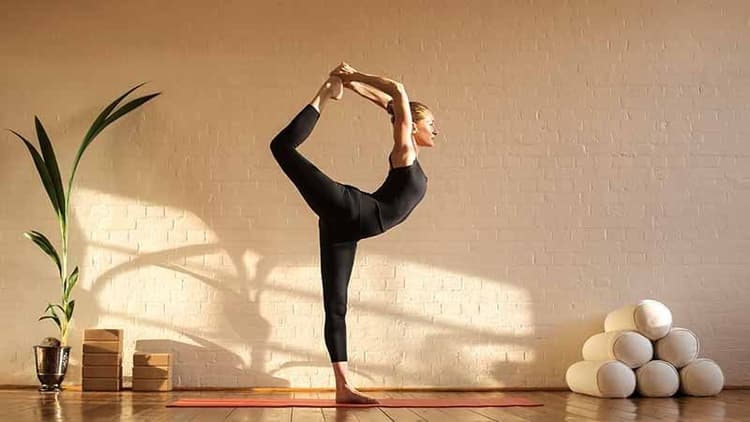This Is How Yoga Impacts Your Fight Or Flight Response, According To Science
46 months ago
3 minute read.

The fight-flight response can be summed up in one word: stress. Many people experience it on a regular basis, whether they’re under pressure at work or dealing with an upsetting personal issue, like an illness or relationship concern. Everyone deals with stress differently, but you may have heard of the benefits of meditation and yoga, particularly when it comes to relaxation and reducing stress levels. How long have you known that yoga can reduce stress? Maybe you’ve heard that yoga will help calm you down and reduce your stress levels, but didn’t know exactly how or why it works.
Understanding PNS & SNS
The Parasympathetic Nervous System (PNS) and Sympathetic Nervous System (SNS) are our rest-and-digest and fight-or-flight systems respectively. If we were living in a perfect world these two systems would be in balance: they would act as checks on each other ensuring optimal rest and overall well-being – fight when we needed to; rest when it was time. But most of us don’t live in that world; instead, we live very stressful lives where our SNS (fight-flight response) is turned on all day every day.
Looking at how yoga impacts PNS & SNS: Yoga generally stimulates our PNS and calms down our SNS, which is why exercise can help alleviate stress by switching from fight/flight mode to relax/rest mode. If you’re feeling stressed take a few minutes to do Yoga; it will lower your heart rate, boost serotonin levels and decrease muscle tension.
What stimulates flight or fight mode?
Take a moment and think of your fight-or-flight response. If you're not familiar with it, fight-or-flight is an instinctive stress reaction triggered when we perceive threats. Our hearts race, our blood pressure rises and our breathing becomes rapid as adrenaline floods our system to give us energy for either defending ourselves from harm (fight) or running away (flight). It’s how we used to protect ourselves on a regular basis before things like job security, higher education and modern medicine became everyday realities. However, if left unchecked, fight-or-flight can have significant long-term effects on both our mental and physical health in today's world.
How does yoga help in flight/fight response?
Thankfully there are techniques that can help inhibit or desensitize fight-or-flight responses; one such technique is called pranayama—breathing exercises practiced in yoga classes all over the world. The term prana translates loosely into English as life force while Yama means to control, so pranayama loosely translates into breath control. Many types of breathing exercises are performed during practice ranging from passive breathing exercises to deep breathing that may alter body consciousness. One type of pranayama, in particular, has been found to directly impact fight-or-flight pathways. It's Alternate nostril breathing.
How do your body and brain respond to yoga?
Basically, when you think of fight-or-flight, it’s not just for when a wild bear is chasing you (although that would probably be an ideal time). It’s actually a more subtle and complex reaction that happens in times of stress. The hypothalamus triggers what’s called the sympathetic-adrenal medullary (SAM) system which causes your body to increase heart rate, blood pressure, and glucose levels while also releasing stress hormones like adrenaline.
This fight-or-flight response was created over millions of years of evolution to help us protect ourselves from danger. These days, with our stressors coming from more places than ever—our jobs, commuting to work on busy roads, talking with loved ones about relationship problems—the SAM system gets activated way too often and at inappropriate times. However, yoga can help regulate your fight-or-flight response by helping control some of these stressors and symptoms.

A 2015 study published in Evidence-Based Complementary Alternative Medicine found that yoga reduces anxiety and depression, both of which are linked to chronic fight-or-flight activation. Researchers hypothesize that part of why yoga helps reduce these conditions is because it forces you out of fight mode since it involves holding poses for several minutes. In turn, we relax into rest and digest mode where cortisol decreases—making us less stressed, anxious, and depressed as well as more focused, creative, and happy overall.
Conclusion
What Happens During A Fight-or-Flight Response? In short, your blood pressure and heart rate increase as more blood rushes to your muscles in preparation for a dangerous situation; additionally, your senses are heightened so you can better react. However, in today's stressed-out world, that fight-or-flight response is something we experience constantly—not just when faced with threats like bears on our daily run. As it turns out, practicing yoga helps us use our muscles less during stressful situations (as opposed to using them more), which reduces our urge to escape from said stressors via fight or flight. Instead of escaping from your problems (i.e., putting off an assignment until tomorrow), channel that energy into mindfulness through meditation instead!
Leave a Comment
Related Articles
Health Checks @ Home
Service
Explore
© 2025 Truworth Health Technologies Pvt. Ltd.




